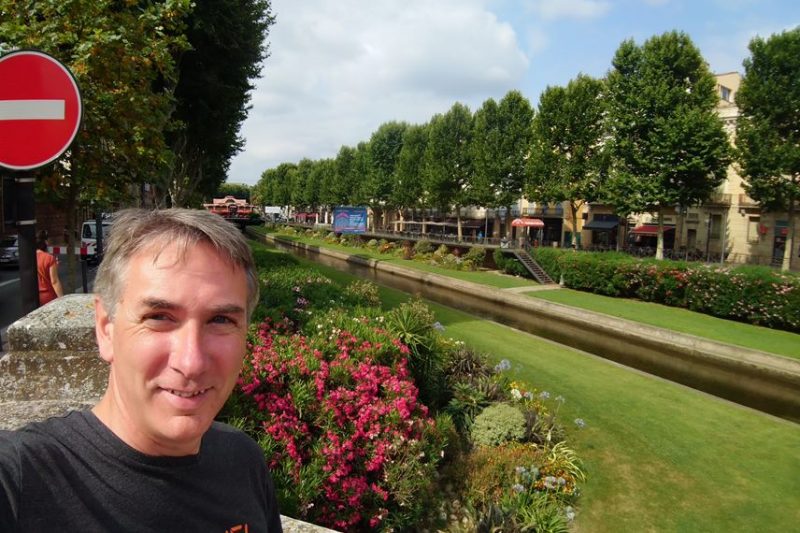Conor Power finds Perpignan lacking in over-tourism but in nothing else
Although there are plenty of direct regular flights from Ireland to Perpignan throughout the summer (see details below), it’s more often than not used as a conduit to visit places on the coast such as Argelès-sur-Mer (which has become a firm favourite of Irish families in recent years), Canet-en-Roussillon (where the highest percentage of owners of holiday homes is Irish) and Collioure. The rugby-supporting fraternity would have also followed their provinces down here to do battle with local rugby union club USAP but with Perpignan’s rugby team languishing in the French second division at the time of writing, those days are over for the time being.

The good news is that this all adds up to make Perpignan one of greatest (and largest) hidden gems in the South of France for someone looking for a smashing city break in a very genuine and down-to-earth French city, with a rich history, a multitude of reasonably-priced dining and socialising options and a place devoid of mass tourism (leaving aside the weekends when visiting British rugby league supporters arrive for challenge matches every couple of weeks during the season).

The first thing to know about Perpignan is that it is proudly Catalan. This was a regional capital of one half of the Kingdom of Catalonia, which included Spanish Catalonia and the Balearic Islands. The old palace of the Kings of Majorca is located here and still largely intact since the 13th century. Although the Catalan language has become less used over the last century, there has been a huge increase in popularity of Catalan-language schools and you’ll notice the ‘blood and gold’ flags everywhere.
Perpignan’s old town centre is a decidedly non-chic but alluring maze of mediaeval streets where you’ll find a superb selection of quality shopping. The large Place de la République is something of an epicentre of local social life, with a balanced mixture of cafés to cater for those who like their little local (such as Bar and Britz) or those who prefer the more classic bistro (such as Le Républic Café). From here, a good exploration option would be to head west towards the palm-tree-packed Place François Arago and then north along Quai Nicholas Sardot following the line of the old ramparts past the remaining tower gate of Le Castillet towards the Parc Municipal. It’s a lovely stroll by the fastidiously well-kept flowering riverside and park and once you get to Rue Edmond Bartissol, turn south and you’ll plunge back into the old town via an elegant staircase taking you through the last remaining section of the Vauban-built fortifications that once surrounded the entire city.

As you head south across the old town again, a visit to the cathedral (Basilique-Cathédrale de Saint-Jean Baptiste) is well worth a visit – if nothing else for the thrill you’re guaranteed at witnessing its enormous dimensions that you can’t possibly guess from looking at from the outside. Keep an eye out while here for the Moorish head suspended below the great organ – one of many indications of Moorish influence on design and architecture of the Gothic era in this part of the world.

At the southern end of the old town past an era rebuilt mostly in the 1920s and up on a hill, you’ll find the huge Palais des Rois de Majorque (Palace of the Kings of Majorca) – a sprawling construction from the 13th century that has been renovated to its former slightly-austere finest. One of the best points of interest are the two chapels one over the other. The one on top was for royalty while the one beneath was for commoners. Here again, if you look carefully, you’ll see some vestiges of the original decoration on the walls with strong influences from the Muslim world. Also not to be missed while you’re here is a climb up the tower from where dominant views make it all worth the effort.
Where Exactly?
Getting There
Aer Lingus operate a summer service 5 times per week. See www.aerlingus.com for further details.
Staying There
We stayed at the recently-renovated Hôtel Campanile Perpignan Centre in a perfectly calm location close to the public park and two steps from the entrance to the old town via the ramparts. Good quality service and food for a 3-star hotel.
Eating There
The Café Vienne on Place François Arago offers a superb menu with the freshest of presentation surrounded by a mini forest of palms. The €29.50 evening menu is excellent value
More Information
For more information on Perpignan, see the official Perpignan Tourism website.




 Tootlafrance is Ireland’s fresh new eyes on France, bringing you the latest news, exclusive celebrity interviews, political analysis, cultural events, property news and, of course, travel features written by top Irish journalists.
Tootlafrance is Ireland’s fresh new eyes on France, bringing you the latest news, exclusive celebrity interviews, political analysis, cultural events, property news and, of course, travel features written by top Irish journalists.